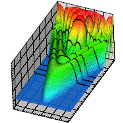Department of Physics and Astronomy: Publications and Other Research

Anthony F. Starace Publications
Document Type
Article
Date of this Version
October 1999
Abstract
We demonstrate control of high-harmonic generation (HHG) by a linearly polarized laser field using uniform static magnetic and electric fields parallel to the laser polarization. We show that the harmonic intensity can be considerably increased for particular values of the magnetic field. The maximum values of the harmonic intensity correspond to such values of magnetic induction for which an integer multiple of the classical cyclotron period of the electron’s motion perpendicular to the magnetic field is equal to the return time of the ionized electron wave packet to the nucleus under the influence of the laser field (and static electric field, if present). While a static magnetic field (for the strengths we are considering) only affects the cutoff position slightly, a static electric field can introduce additional plateaus and cutoffs. A properly chosen combination of the static electric and magnetic fields can increase both the harmonic intensity and the harmonic order. For the case of a magnetic field only, the present work expands upon a brief account recently given elsewhere [D. B. Milošević and A. F. Starace, Phys. Rev. Lett. 82, 2653 (1999)]. For both a static B field and for parallel static B and E fields, the present work provides further confirmation of the so called “three-step” model for interpreting quantum-mechanical predictions of HHG.


Comments
Published by American Physical Society. Phys. Rev. A 60, 3160 (1999). http://pra.aps.org. Copyright © 1999 American Physical Society. Permission to use.